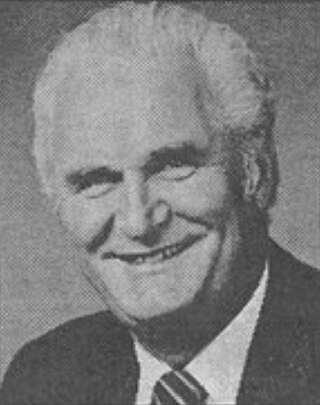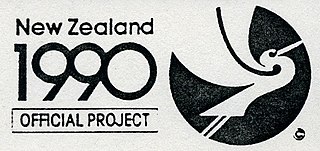Related Research Articles

Wellington is the capital city of New Zealand. It is located at the south-western tip of the North Island, between Cook Strait and the Remutaka Range. Wellington is the second-largest city in New Zealand by metro area, and is the administrative centre of the Wellington Region. It is the world's southernmost capital of a sovereign state. Wellington features a temperate maritime climate, and is the world's windiest city by average wind speed.

Nelson is a city on the eastern shores of Tasman Bay / Te Tai-o-Aorere. It is the oldest city in the South Island and the second-oldest settled city in New Zealand; it was established in 1841 and became a city by royal charter in 1858.

Waitangi Day, the national day of New Zealand, marks the anniversary of the initial signing—on 6 February 1840—of the Treaty of Waitangi. The Treaty of Waitangi was an agreement towards British sovereignty by representatives of the Crown and indigenous Māori chiefs, and so is regarded by many as the founding document of the nation.

Palmerston North is a city in the North Island of New Zealand and the seat of the Manawatū-Whanganui region. Located in the eastern Manawatu Plains, the city is near the north bank of the Manawatu River, 35 km (22 mi) from the river's mouth, and 12 km (7 mi) from the end of the Manawatu Gorge, about 140 km (87 mi) north of the capital, Wellington. Palmerston North is the country's eighth-largest urban area, with an urban population of 81,200. The estimated population of Palmerston North city is 90,400.

Television New Zealand, more commonly referred to as TVNZ, is a television network that is broadcast throughout New Zealand and parts of the Pacific region. All of its currently-operating channels are free-to-air and commercially funded.

The Tamworth Country Music Festival is an annual Australian music festival held for 10 days from Friday to Sunday in mid to late January each year, sometimes including Australia Day, in Tamworth, New South Wales. The festival is the second biggest country music festival in the world, after the CMA Music Festival in Nashville, Tennessee, USA.

Wellington Regional Stadium is a major sporting venue in Wellington, New Zealand. The stadium's bowl site size is 48,000 m2 (520,000 sq ft).

The 2011 Rugby World Cup was the seventh Rugby World Cup, a quadrennial international rugby union competition inaugurated in 1987. The International Rugby Board (IRB) selected New Zealand as the host country in preference to Japan and South Africa at a meeting in Dublin on 17 November 2005. The tournament was won by New Zealand, who defeated France 8–7 in the final. The defending champions, South Africa, were eliminated by Australia 11–9 in the quarter-finals. The result marked the third time that the tournament was won by the country that hosted the event.
The Cuba Street Carnival was a street parade and creative celebration in Cuba Street, Wellington, New Zealand that was intermittently held from the 1980s and saw crowds of 10,000 - 20,000 people. It stopped in 2009 due to a lack of funding, and was revived in 2015 under the name Cubadupa.

New Zealand society is generally accepting of lesbian, gay, bisexual and transgender (LGBT) peoples. The LGBT-friendly environment is epitomised by the fact that there are several members of Parliament who belong to the LGBT community, LGBT rights are protected by the Human Rights Act, and same-sex couples are able to marry as of 2013. Sex between men was decriminalised in 1986. New Zealand has an active LGBT community, with well-attended annual gay pride festivals in most cities.
The New Zealand International Film Festival (NZIFF) (Māori: Whānau Mārama) is a film festival held annually across New Zealand throughout the latter half of the year, starting in Auckland in July.

Sir James Belich was a New Zealand local politician. He was the mayor of Wellington from 1986 to 1992.

The New Zealand International Comedy Festival is held simultaneously over three weeks during April/May in Auckland and Wellington. From its beginnings as a 2-day event, the Festival has now developed into a major nationwide event with a total attendance of over 100,000 people each year. The Festival is run by the New Zealand Comedy Trust.

The suburb of Newtown lies in the southern part of Wellington in New Zealand. It lies east of Vogeltown, between Mount Cook and Berhampore. The main thoroughfares of Newtown are Riddiford St, leading from Mount Cook to Berhampore and Melrose, and Constable St, leading from Newtown to Kilbirnie.
Rangikaiamokura Wirihana Hetet is a Maori master carver of Ngāti Tuwharetoa and Ngāti Maniapoto descent.
Japanese New Zealanders are New Zealand citizens of Japanese ancestry, which may include Japanese immigrants and descendants born in New Zealand. Japanese people first began immigrating to New Zealand in the 1890s. Until 1920, 14 Japanese citizens resided in New Zealand. Japanese immigration was halted during the period of the Pacific War and recommenced around the 1950s. From this period onwards, Japanese immigration remained small until the 1990s. In 1997, Japanese peoples were the 19th-largest ethnic group in New Zealand. As of the 2018 census, 18,141 New Zealand residents identify themselves as Japanese New Zealanders.

The Pacific Media Network is a New Zealand radio network and pan-Pasifika national broadcasting network, currently owned and operated by the National Pacific Radio Trust and partly funded by the Government. It includes the PMN 531 radio network, PMN News and Auckland-only broadcast station PMN NIU combined are accessible to an estimated 92 percent of the country's Pacific population. The network targets both first-generation Pacific migrants and New Zealand-born people with Pacific heritage. As of 2009, it was the only specifically pan-Pacific broadcaster in New Zealand.

CubaDupa is New Zealand's largest outdoor arts and music festival, celebrating the unique character of Cuba Street, Wellington. CubaDupa describes itself as "a creative playground blurring the lines between audience & performer." It attracts up to 100,000 people. The festival is managed and produced by the non-profit Creative Capital Arts Trust. It is held each year over a weekend in late March. The festival features a dozen music stages, parade groups, street theatre performances, visual art installations, and food and beverage vendors. Some central city streets are closed with Cuba Street in the centre, creating a large pedestrian festival zone. Many artists participate in the CubaDupa programme, including acts from all over the world. In 2023, over 1,200 artists were signed up to perform, in 41 different venues around the city centre.
AotearoaNew Zealand Festival is a multi-arts biennial festival based in Wellington New Zealand that started in 1986. Previous names are the New Zealand International Festival of the Arts, New Zealand International Arts Festival, New Zealand Arts Festival and New Zealand Festival of the Arts. The festival is produced every two years and runs across three weeks in venues in Wellington City and outreach programmes in the region. The festival features both international and national acts from performing arts and music with a literary programme also.

The New Zealand 1990 Commission was established on 3 December 1988 to initiate activities and events for celebrating the 150th anniversary of New Zealand as a nation, the signing of the Treaty of Waitangi, 1000 years of known human habitation of New Zealand, and the 75th anniversary of the landing at Gallipoli.
References
- ↑ Giblin, Ross; Taonga, New Zealand Ministry for Culture and Heritage Te Manatu. "A model of the Sesqui 1990 fair". teara.govt.nz.
- ↑ "Report to Wellington City Council and Wellington Regional Council on their involvement with NZ SESQUI 1990 Festival". Office of the Auditor-General New Zealand.
- ↑ "Wellington Show Association Incorporated (in liquidation) Notice of Appointment of... - 1999-al4679 - New Zealand Gazette". www.gazette.govt.nz.